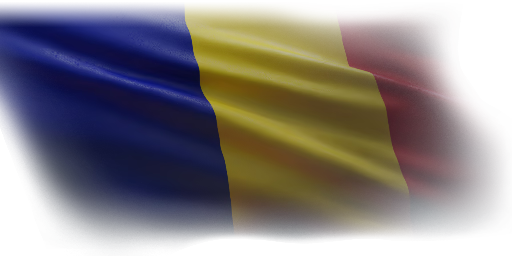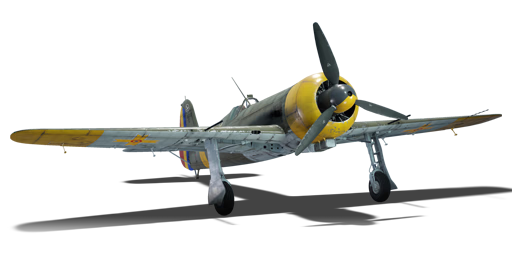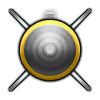

Aviation
IAR-81C
II
Rank
AB
2.7
RB
2.7
SB
2.7
Battle rating
Italy
Research country
Fighter
Main role
1,000

Purchase

Premium vehicle
Status

Romania
Operator
General information
Introduced in Update 1.79 "Project X", the IAR-81C variant is the up-gunned version, and excels at ground support. Boasting good offensive firepower and decent payload options for a converted fighter, the IAR-81 is capable of multiple roles. Harassing enemy ground forces only to follow up by securing the air space is among tactics typical for this type of fighter. While there are no obvious shortcomings to this fighter, neither does it excel in any category. The combat role flexibility is a force multiplier especially on early maps as it opens another crew slot for specialist vehicles.
Camouflages
Flight performance
Max speed
at 5,000 m
485451504467 km/h
Rate of Climb
11.99.3159.3 m/s
Turn time
2021.719.121 s
Max altitude
9,500 m
Takeoff Run
350 m
Landing
flaps
flaps
Take-off
flaps
flaps
Combat
flaps
flaps
Air
brake
brake
General characteristics
Crew
1 person
Engine
Length
9 m
Wingspan
11 m
Wing Loading
173 kg/m²
Weight:
Base weight
2.522.62.452.58 t
Fuel in main tanks
0.33 t (1h 20m)
Limits:
Max Speed Limit (IAS)
680 km/h
Mach Number Limit
0.72 M
G limit
≈ -8/11 G
Flap Speed Limit (IAS)
L / T / C
750 / 789 / 795 km/h
Gear Speed Limit (IAS)
280 km/h
Offensive armament
2 × 20 mm MG 151 cannon
Ammunition
350 rounds
Fire rate
700 shots/min
One-second Burst Mass
1.29 kg
| Belt | Belt filling | Armor penetration (mm) at a distance: | |||||
|---|---|---|---|---|---|---|---|
| 10 m | 100 m | 500 m | 1000 m | 1500 m | 2000 m | ||
| IT/IT/APHE/HEI | 21 | 19 | 8 | 3 | 1 | 1 | |
| IT/HEI/HEI/AP-I | 27 | 24 | 14 | 7 | 3 | 2 | |
| AP-I/HEI/HEI/HEI/HEI/IT | 27 | 24 | 14 | 7 | 3 | 2 | |
| APHE/APHE/APHE/IT | 21 | 19 | 8 | 3 | 1 | 1 | |
| FI-T/FI-T/FI-T/IT/IT | 21 | 19 | 8 | 3 | 1 | 1 | |
| HEI/HEI/HEI/APHE/AP-I | 27 | 24 | 14 | 7 | 3 | 2 | |
2 × 7.92 mm FN Browning machine gun
Ammunition
1,400 rounds
Fire rate
1,050 shots/min
One-second Burst Mass
0.18 kg
| Belt | Belt filling | Armor penetration (mm) at a distance: | |||||
|---|---|---|---|---|---|---|---|
| 10 m | 100 m | 500 m | 1000 m | 1500 m | 2000 m | ||
| AP-T/Ball/Ball/AP-I/AI | 9 | 8 | 6 | 3 | 0 | 0 | |
| AP-T/AP/AI/AP-I | 13 | 12 | 7 | 3 | 2 | 0 | |
| AP-T | 9 | 8 | 6 | 3 | 0 | 0 | |
| AI/AP/AP/AP/AI | 13 | 12 | 7 | 3 | 2 | 0 | |
Suspended armament
Max weight
480 kg
Wing loading
left / right
Maximum
240 kg
Max. difference
180 kg
| Name | Weight | Slot | ||||||
|---|---|---|---|---|---|---|---|---|
| 112 kg |  |  | ||||||
| 50 kg |  |  | ||||||
| 250 kg |  | |||||||
Economy
Repair cost
AB
942 

RB
788 

SB
1,130 

Crew training
4,800 

Experts
32,000 

Aces
250 

Research Aces
440,000 

Reward multiplier
AB / RB / SB
 2 x (50 / 100 / 200) %
2 x (50 / 100 / 200) % 
 2 x 124 %
2 x 124 % 

Premium vehicle
All modifications are unlocked
Flight performance | |
|---|---|
Survivability |
|---|
Weaponry | |
|---|---|
Rating by players
You must play more than 3 battles for the last week and more than 10 battles in a vehicle to rate it.
Like:
43
Flight performance:
Not enough ratings
Survivability:
Not enough ratings
Aerial combat:
Not enough ratings
Ground attack:
Not enough ratings
Balance:
Not enough ratings
Tips & Tricks
This space is currently empty
Do you know any interesting vehicle features?
Loading...
No articles about this vehicle yet
Become the first author and get rewards!
Write a guide, tell about interesting historical facts, make a tutorial or simply an interesting post.
No more content